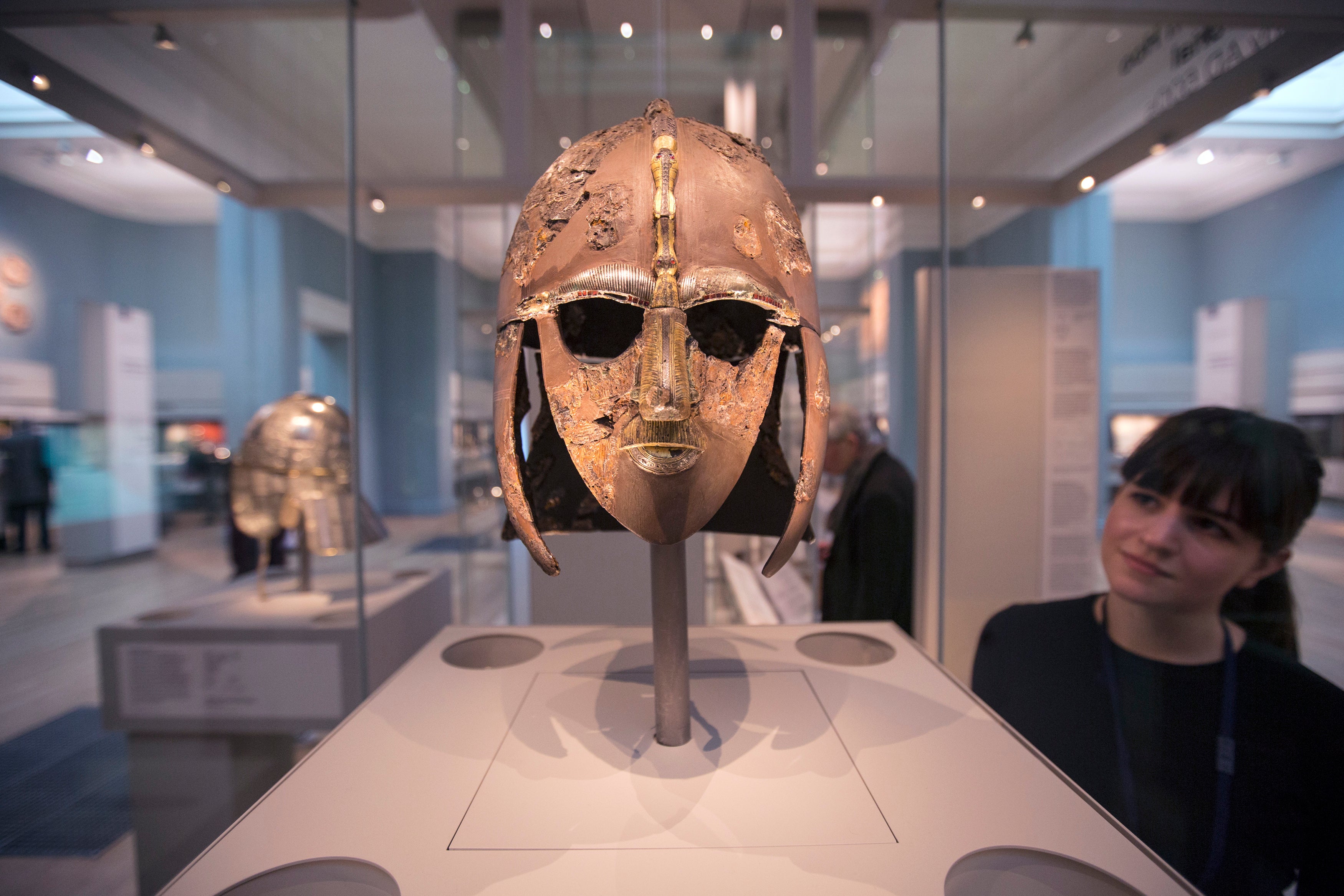Sutton Hoo mystery is solved after 85 years - as historian controversially claims the burials were NOT for royals
Share:
For nearly 100 after its discovery, the Sutton Hoo burial site in Suffolk was assumed to be the resting place for a high-ranking royals. Out of about 20 burial mounds at the site, the most famous was thought to hold the remains of a 90-foot ship and a man – possibly a king – surrounded by opulent treasures, including a decorated helmet, gold coins and an iron sword.
![[Photo from Trustees of the British Museum showing the discovery of a gold and garnet shoulder clasp from the ship burial mound at Sutton Hoo]](https://i.dailymail.co.uk/1s/2025/01/08/12/93861043-14262073-image-a-17_1736337621856.jpg)
However, a researcher now claims Sutton Hoo was not the resting place for royals at all, but rather soldiers. Dr Helen Gittos, a historian at the University of Oxford, says the graves in fact belonged to British men who fought for the Byzantine Empire.
![[Pictured, a pair of hinged gold clasps jewelled with garnet and mosaic glass each with chained fastening pin in the form of an animal head found at Sutton Hoo]](https://i.dailymail.co.uk/1s/2025/01/08/10/93861007-14262073-Pictured_a_pair_of_hinged_gold_clasps_jewelled_with_garnet_and_m-m-21_1736333200710.jpg)
The Byzantine Empire, also known as the Eastern Roman Empire or Byzantium, was a powerful civilization based at Constantinople (modern-day Istanbul). These early medieval soldiers were recruited from Britain into the Byzantine army in AD 575 and fought Sasanians, the ancient Iranian dynasty.
![[This Ornamental silver plate now at the British Museum was among the 1 400-years-old treasures unearthed at Sutton Hoo ship]](https://i.dailymail.co.uk/1s/2025/01/08/12/93861025-14262073-image-m-19_1736337716286.jpg)
'Those who returned brought back with them metalwork and other goods which were current, and distinctive, and not the kinds of things that were part of normal trading networks,' she says. 'This opens up a startlingly new view onto early medieval English history.'.
![[Out of about 20 burial mounds at the site, the most famous held the remains of a 90-foot ship and a man - possibly a king - surrounded by opulent treasures. Pictured, a burial mound at Sutton Hoo]](https://i.dailymail.co.uk/1s/2025/01/08/11/93861015-14262073-Located_near_Woodbridge_Suffolk_Sutton_Hoo_is_home_to_two_burial-a-15_1736337269077.jpg)
The Sutton Hoo helmet is a decorated Anglo-Saxon helmet found during a 1939 excavation of the Sutton Hoo ship-burial. Photo from Trustees of the British Museum showing the discovery of a gold and garnet shoulder clasp from the ship burial mound at Sutton Hoo.
![[Amateur archaeologist Basil Brown famously discovered Sutton Hoo in 1939 , when he brushed away the Suffolk soil on request of local woman Edith Pretty. He uncovered evidence of a epic funerary monument – a 88.6-foot-long ship with a burial chamber of luxury goods. The ship's wood rotted away in the acidic soil over the course of 1,300 years, leaving only an imprint]](https://i.dailymail.co.uk/1s/2025/01/08/10/93861039-14262073-image-m-18_1736331180575.jpg)






















